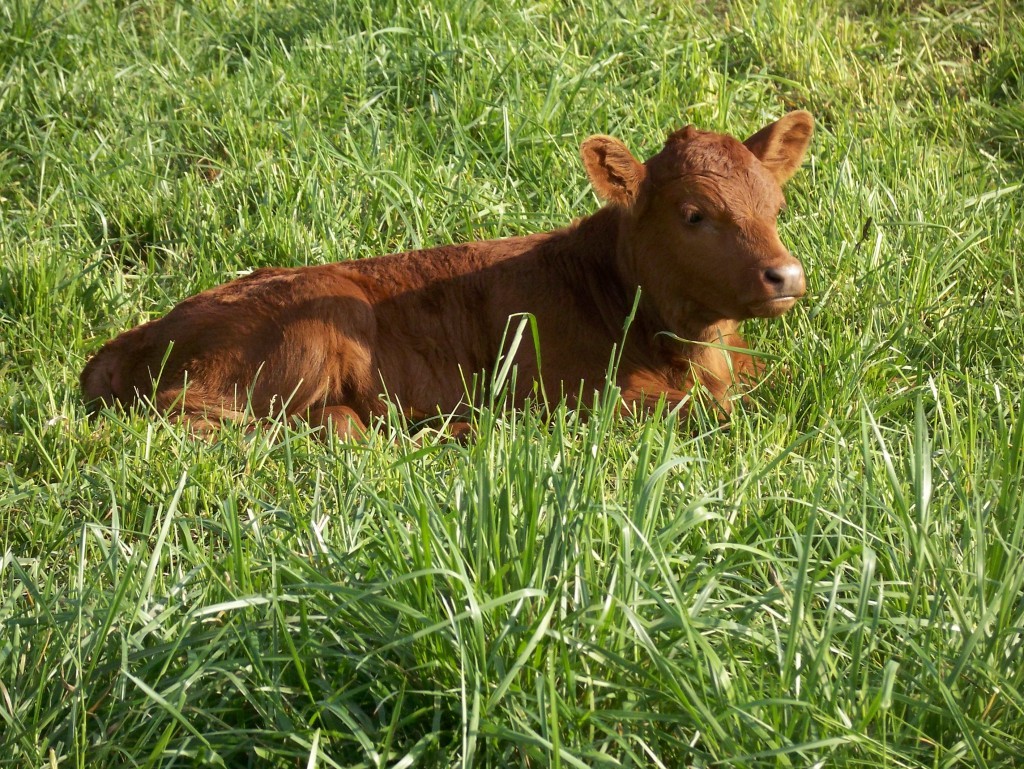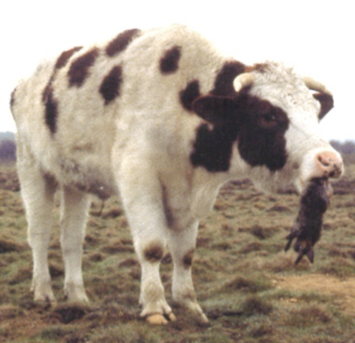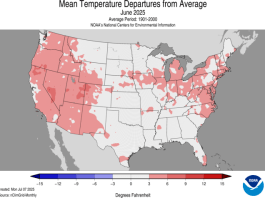
Years ago I found a book entitled The Lasater Philosophy of Cattle Raising by Laurence Lasater. It was a real eye opener for us, and the guidelines from this book have been the backbone of our breeding program for cattle during the last couple of decades. Tom Lasater, founder of Beefmasters, believed you could take the guess work out of cattle breeding by requiring your breeding stock to accomplish some simple, but tough goals. In a nutshell, every cow must raise an acceptable calf and breed back every year in a defined breeding season, grazing the grasses that grow naturally on your ranch with little or no outside inputs. No exceptions. Doesn’t produce one year out of ten, she is off to town. Simple plan, but very hard to follow. Even though Lasater developed and bred Beefmaster cattle, the philosophy can be applied to any breed.
We have used Beefmaster bulls from the Lasater foundation herd for years now and while we like the cattle, there were still some changes we wanted in the herd that would either take years to accomplish or perhaps a lifetime. One, was a polled animal.

Lasater, rightly so, said it was so difficult to breed animals to fit the simple but tough parameters he used for selecting replacement cows, that you should not add extra traits such as color and polled to the selection process. That said, we still do not like horns or dehorning and wanted to add the polled trait to the cow herd by using polled bulls. We had tried Red Angus bulls to develop a crossbreed that would give us the polled trait but found both the bulls and the crossbred calves unable to fit in our grazing system. We move cows every day and many of our paddocks do not have shade. We also have several grazing paddocks that have a large amount of endophyte infected fescue which adds about 10 degrees to a hot day for cattle affected by the endophyte. Though there are many good Angus breeders, even the best will usually tell you that if you are breeding in July/August in the fescue belt their bulls will probably not work. They simply get too hot. We turn bulls in July 4th for a 45-60 day breeding season and have yet to have an Angus bull make it all the way through the season without falling out.
Another trait we were looking for was moderation in cow size. While many of our Beefmaster cross cows are in the 1100-1250 pound range, we would always have some that topped the scale at 14-1500 pounds. Since we don’t supplement our cattle, size has never been that big a concern to us, but we envision some day a larger commercial market for grass fed beef and wanted to have cows that would raise calves that could go either way, to the traditional feedlot or to the grass finisher. Finding a breed that would add these traits but allow us to retain the heat tolerance, early maturity and adaptability of the Beefmaster cows was tough. Then one day, about six years ago, my wife Judy read an ad for South Poll bulls for sale.
There are many composites in the cattle world, but most seem to be trying to accomplish the same thing. Combine English maternal breeds with Continental terminal breeds to produce a cow that combines both characteristics and allows the use of one bull to produce replacement females and fast growing steers for the feedlot. While the merits of these composites can be debated, one thing I believe is that once you get past hybrid vigor and begin reproducing the crosses to stamp the breed, you will always have tradeoffs.
Those tradeoffs, generally speaking are:
- Faster growth = less fertility, late maturity
- Too much milk = less fertility, harder keeping.

A friend of mine who breeds some of the best maternal Red Angus in the business said he’s always breeding for average. If you go past average in any direction you give up something in another direction. The hard part is marketing average.
The South Polls on the other hand are not looking to compete with terminal/maternal composites in growth, but to compete with Angus in the hot, humid regions where maternal, non Bos-Indicus cattle often fail to reproduce at an economical rate. South Polls are a fairly new breed developed by Teddy Gentry, combining Barzona/ Herefords with Senepol/Red Angus genetics to produce a heat tolerant, moderate sized, polled Bos Tauras mama cow for the south. They are not going to grow faster than a Charolais or a Gelbvieh. But they are going to breed back in a hot humid climate while raising a good calf on nothing but grass.
And the other strength of this composite is its ability to fatten in a grass finishing market. At the recent South Poll Grass Cattle field day I was surprised by the number of breeders who sell a majority of their cattle as grass fattened beef direct to the consumer.
Though the numbers are still small, the breed is growing fairly quickly. While the breed originated in Alabama, Missouri seems to be a hot bed for South Polls as they fit our climate, and are able to tolerate endophyte infected fescue well. They have also been bred with the grass finisher in mind and the growing popularity of grass finished beef has helped to fuel demand for South Poll calves.

After seeing the ad for South Polls, Judy and I went to see the bulls for sale and had the pleasure of seeing one of the nicest cattle herds around. What surprised us was the consistency of the cows. Being composites, we expected to see a lot of variance and were very pleased to see an almost “peas in a pod” herd. We bought three bulls and so added South Polls to our Beefmaster bull battery to eliminate horns but retain the heat tolerance, mothering, and grazing ability in our cattle. One trait that we have emphasized beside fertility is disposition, and this is a trait where the South Polls really shine. While we ship cattle for poor disposition and have a gentle herd, we were very pleased and surprised with the gentleness of the South Polls. And while Beefmaster don’t throw large calves, we have found breeding our heifers to South Poll bulls almost eliminated the need to check two year olds during calving. This year we calved fifty 22-24 month old heifers and had to pull one. His head was turned back, and he was a little large. The calves are extremely quick to their feet and to the teat.
Breeding cattle always has a bit of dreaming and imagination that goes with it. We envision a herd of peas in the pod, red, polled, heat tolerant, moderate sized cows that can withstand the below zero temps of winter and still be able to breed back in the heat and humidity of our Missouri summers while providing us with a good marketable calf. And do all this with little or no outside inputs. Not only do we envision this herd, we know that it is, and will continue to be, necessary in order to make a profit in the years ahead.





We have Black Angus selected to function year around on pasture in which endophyte + Tall Fescue abounds, and we’re in hot, humid SE Pa , about same latitude as MO. On advice of Jim Gerrish about 20 yrs ago, we started to select replacements, each sex, only from animals that appeared best adapted to our environment. It goes without saying that not many succeeded as fertile breeders for more than 5-6 yrs, but some did.
Faced with such challenges and the trending hotter summers, I came to the same conclusion as Steve Freeman and started to cross our more adapted Black Angus with South Poll, using semen from Bent-Tree. The oldest X-bred heifers are only long 2 yr.olds and last summer was too cool to provide a real test, but they all conceived and avoided the pink-eye that ran thru their Angus contemporaries. They grew equally and have the expected slicker coats. A year from now we’ll have a better fix on this strategy.
Comments are closed.